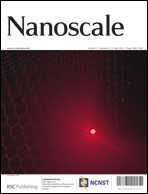Nitrogen doped holey graphene as an efficient metal-free multifunctional electrochemical catalyst for hydrazineoxidation and oxygen reduction†
Abstract
Electrocatalysts for anode or cathode reactions are at the heart of electrochemical energy conversion and storage devices. Molecular design of carbon based nanomaterials may create the next generation electrochemical


 Please wait while we load your content...
Please wait while we load your content...